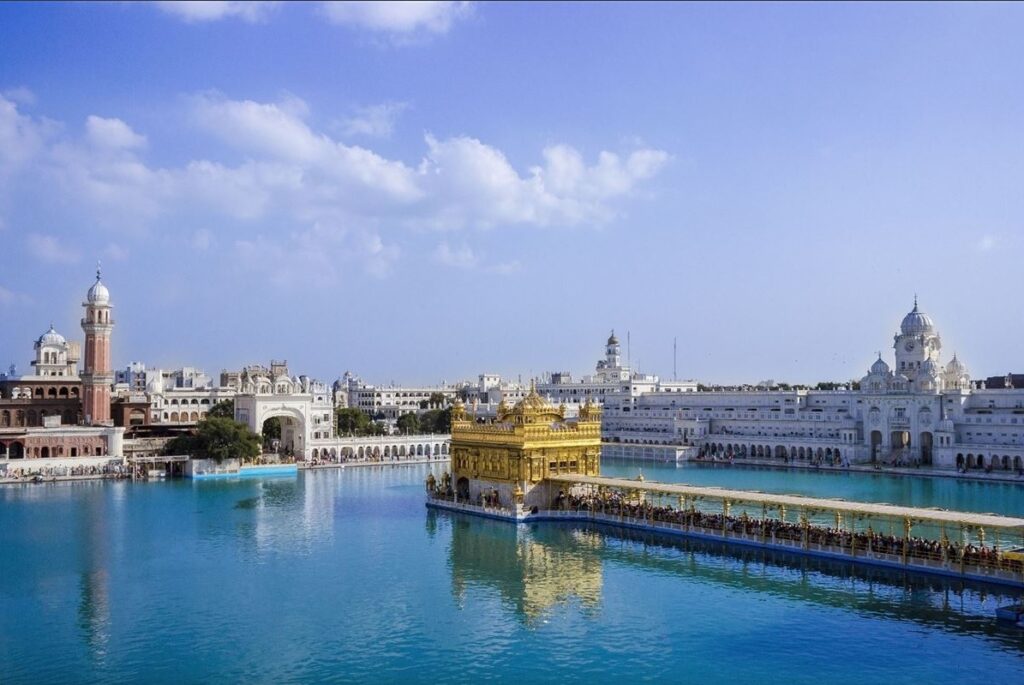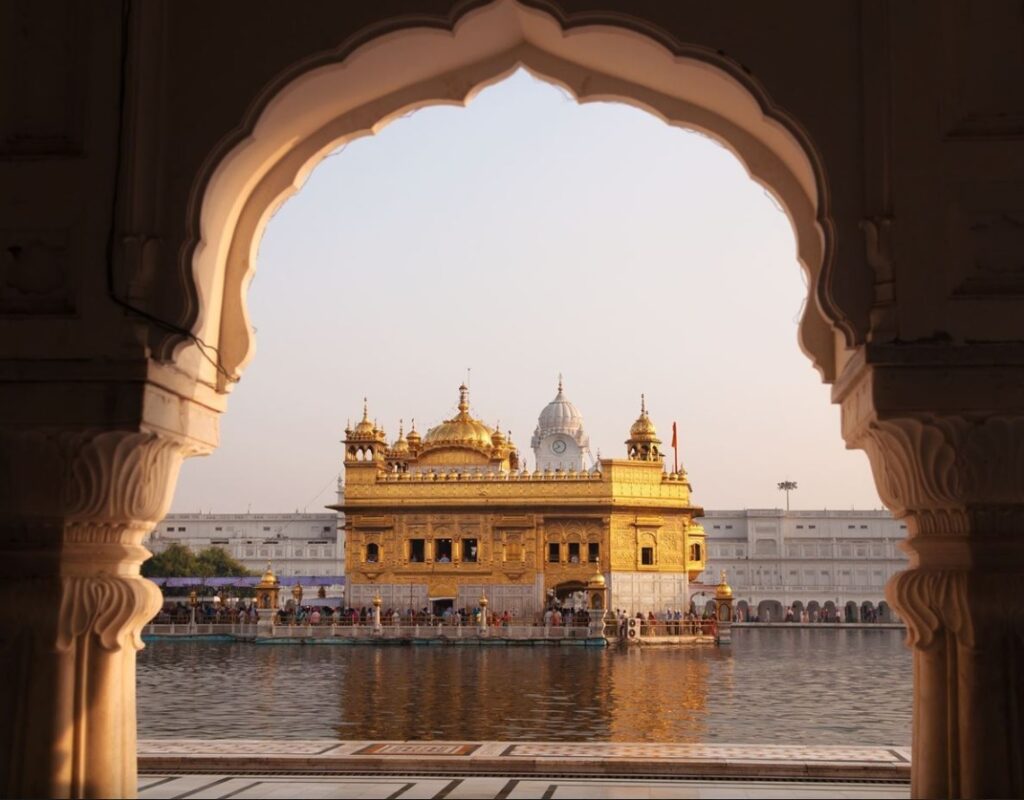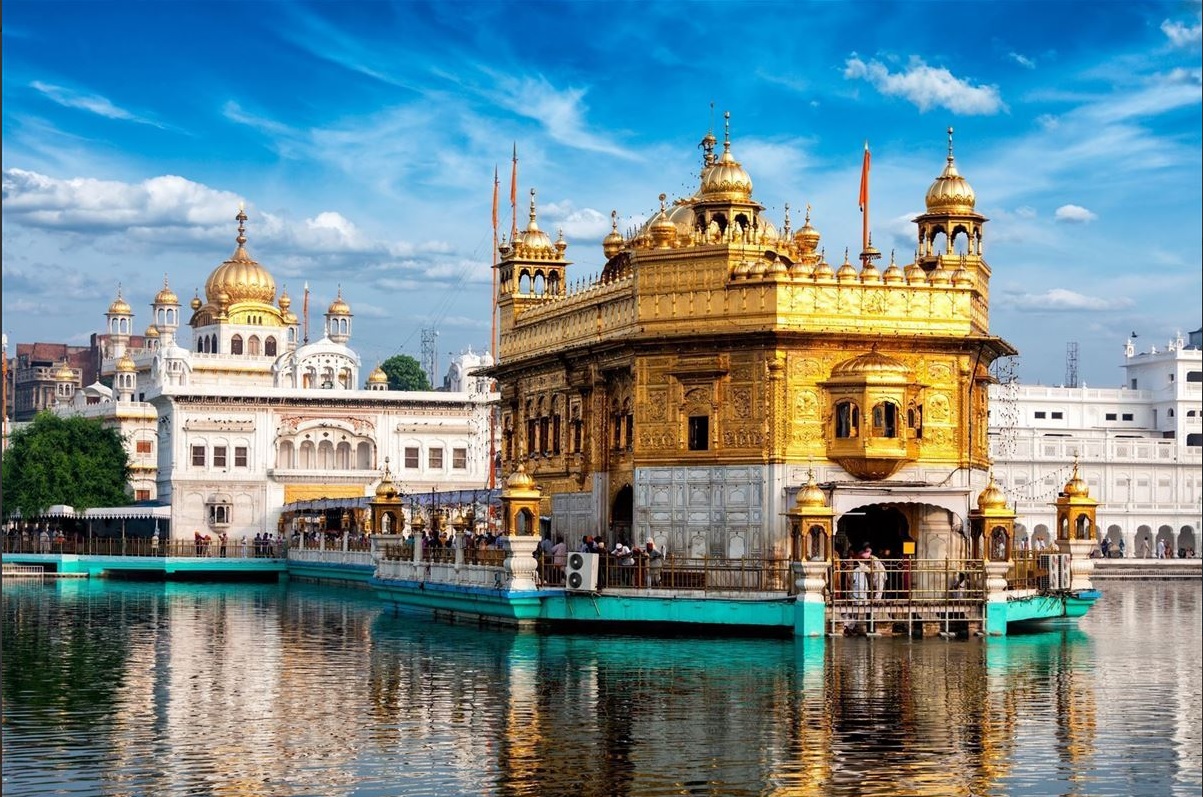The Golden Temple of Amritsar is one of the sightseeing places in North India. The city in the Indian state of Punjab derives its name from the lake in the middle of which the Golden Temple was built. The waters of the Amrit Sarovar, also called Amrit Lake, are considered sacred by Sikhs. Year after year, thousands of devotees make a pilgrimage to the city, which has a population of 1.1 million, to bathe in the lake’s waters. Amritsar’s Golden Temple is considered the spiritual center of Sikhism.

It stands in the middle of a rectangular pool, whose golden contours reflect in the water. Pilgrims walk clockwise on a wide path around the lake, which is surrounded by a palace complex. The striking beauty of the temple, called Harmandir Sahib, the Temple of God, leaves an indelible impression, which is further enhanced by countless Sikhs in their traditional garb.
Free food and drink are provided to the 80,000 pilgrims who visit the temple every day. This only works because a large community forms in which everyone performs assigned tasks, such as cutting vegetables or cleaning utensils.
Golden Temple of Amritsar

Amritsar is in northern India, very close to the Pakistani border. If you come here during your tour of India, then you must visit the Golden Temple. This shrine is a place of pilgrimage for Sikhs, followers of a monotheistic religion whose history dates to Guru Nanak Dev. The real name of the temple is Hari Mandir, but since it is completely covered in gold, it is called the Golden Temple. Sikhism allows everyone to be welcome here, regardless of religion or gender. The construction of the temple began in the 16th century and the magnificent golden dome was added in the 19th century. There is a huge palace complex and an artificial lake around the temple. Inside the temple you can listen to shloka recitation and immerse yourself in the special atmosphere. Especially in the evening, the atmosphere of the temple complex is unique. History lovers come to visit the Sikh History Museum.




